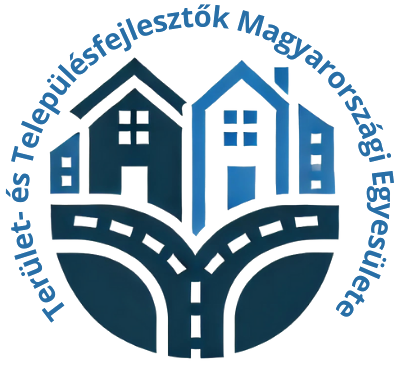
-
 9,5
9,5Dobozi Reformed Church
Located in the centre of Doboz village, in the middle of Kossuth Square, stands the Reformed Church, rich in historical and symbolic value: it was built between 1794 and 1798 during the ministry of Sámuel Kállai M. The church is a single-nave structure with a tower at the front façade, ending in a semicircular closure. The tower's shaft is topped by a clock cornice – complete with a clock. The tower spire bears the year 1867, commemorating its renovation, and is crowned with a decorative finial featuring a globe, star, and flag. The interior furnishings are in a classicising style with Rococo influences. The floor is covered with wide wooden planks. The organ, built in 1912, is also under heritage protection. The unique oak furnishings add a cosy atmosphere to the church interior. Inside the church, there is a distinctive marble baptismal font. The church was damaged during the 1978 earthquake, and its restoration took six years. The building was reinforced with a concealed reinforced concrete structure that even caught UNESCO's attention. In addition to worship services, the Dobozi Reformed Congregation occasionally organises cultural events within the church walls, enriching the cultural life of this ancient settlement.
Magyarország, 5624 Doboz, Kossuth tér 1 -
 9,5
9,5Dobozi Wenckheim Castle
The former Wenckheim Castle now functions as the Dobozi Primary School. In 1944, the castle, which originally had 52 rooms, reached its current form in three stages. First, the hunting lodge facing the main road was completed (currently a shop is located here). The single-storey hunting lodge was built by Rudolf Wenckheim based on the plans of Antal Czigler, the estate architect from Gyula, providing a place for relaxation and hospitality after hunts. In 1850, the upper floor of the castle and its extension parallel to the main road were completed, which now form part of the Dobozi Primary School building. The building took on its "U" shape at this time, and around the same period, in 1852, the romantic-style racing stables and coach house were built based on the plans of Miklós Ybl, followed by the triumphal-arched oat silo granary. Doboz became the centre of the estate, from where the Vésztő and Csorvás properties were managed. At the beginning of the 1900s, Dénes Wenckheim constructed the turret-like, mansard-roofed, slate-covered multi-storey section in the courtyard in a historicist style. A marble staircase leads to the upper floor. From the balcony room, there was a beautiful view of the castle park. The rooms featured stunning tiled stoves matching the wall colours. In the dining room, a 4-metre-tall snow-white tiled stove was brought from Belgium. The upper floor served as the living quarters for the countess and the children. The castle was furnished in an aristocratic and sophisticated manner. On the ground floor, the large dining room, among other things, served as the venue for hunting dinners, and many famous people visited the castle during hunts, including Governor Miklós Horthy. By the 1940s, Count Lajos Wenckheim transformed the castle into a true countryside residence. The corridors' walls were adorned with a collection of hundreds of beautiful and valuable roe deer and stag antlers. The Dobozi hunting lodge was well-known in aristocratic circles. Today, the impressive building houses 9 classrooms. In 1996, the building was expanded with a new wing, which included additional classrooms. The old and new building complex now welcomes Dobozi students with a modern computer room, development room, and specialised classrooms equipped with interactive whiteboards.
Magyarország, 5624 Doboz, Kossuth tér 15 -
 9,5
9,5Exaltation of the Holy Cross Catholic Church and Crypt
Behind the former castle, surrounded by a branch of the Dead Black Körös River, lies a 3.7-hectare castle park, designed by the Wenckheim family in the 1880s. At the highest point of the park stands the neo-Romanesque-style Holy Cross Chapel and Crypt, often referred to as the 'jewel box' of the area. In 1902, Count Dénes built the neo-Romanesque patronal church and the round cemetery chapel, the crypt, based on plans by Viktor Siedek, a Viennese architect. The chapel cost 250,000 crowns. The foundation of the church was dug out in just one week in 1857 by local labourers from Doboz. The buildings were consecrated on 7 June 1902 by Bishop Lőrinc Schlauch of Várad. According to contemporary accounts, at the Gerla bridge, a hundred horsemen welcomed the bishop performing the consecration, escorting him to the church entrance. For the celebratory lunch following the consecration, 800 meal tickets were distributed among the construction workers. The interior is richly decorated, with every column and staircase in the church made of marble. The colourful windows, the three altarpieces, and the ceiling paintings, featuring mosaics covered with 24-carat gold leaf, were created by Tyrolean artists. The church and its associated family crypt can be visited by prior arrangement.
Magyarország, 5624 Doboz, Sport utca -
 9,5
9,5Granary Designed by Miklós Ybl
The Granary is a historic building constructed in 1863. It is an outstanding industrial and architectural monument of the village, built based on the designs of Miklós Ybl for the former Wenckheim estate. This granary is a true forerunner of modern architectural endeavours. The building has a T-shaped floor plan, is three storeys high, and features a closed block structure with simple recessed Gothic-style windows. Between the windows are vertical pilasters running upwards, with a cornice above the second floor. The openings on the third floor crown the building like pearls, which is topped with a low gable roof. The block is connected to the adjacent drying tower by a single arched opening up to the second floor. This served as a covered passageway for transport carts. The larger rectangular section was suitable for grain storage on three levels and functioned as the granary. Perpendicular to this wing is the silo section, which is also three storeys high. It features a semicircular vault in the middle, and on the right side was the drying silo. In 1985, the roof, which had been severely damaged by a storm, was restored, but no further work was carried out. Until 1944, the granary was used by the estate and later by the Agricultural Cooperative, followed by the Békés County Grain Trading and Milling Company. In 1962, the Petőfi Agricultural Cooperative of Doboz purchased the building. The cooperative's management, recognising the rapid deterioration of the structure, planned its renovation but was unable to secure the necessary funds. Despite its significantly deteriorated condition today, the granary is still considered an agricultural heritage site. It is currently in private ownership.
Magyarország, 5624 Doboz, Magtár sor -
 9,5
9,5Samson's Castle
The Árpád-era earthwork known as Samson's Castle appears on András Paulovics's 1789 map, with no earlier references in historical sources. According to a local legend, the castle's name is linked to a robber leader named Samson. During the Turkish era, this was the hideout of a robber leader named Samson, who caused significant damage to the Turks and killed many of them. He had a deep cellar underground where he stored his treasures. However, the only way to access this underground cellar was through the hollow trunk of a stunted willow tree growing on the banks of the Körös River. In 1964, Júlia Kovalovszki, an archaeologist originally from Doboz, determined the extent of the castle during her excavations. Samson's Castle consists of two parts: an inner and an outer castle. In one of her excavation trenches, Júlia Kovalovszki uncovered the remains of a gate tower, which provided passage through the rampart made of compacted earth. In 2006, an authentication archaeological excavation was carried out at the site of the gate tower under the leadership of archaeologists Dr. Mária Béres and András Liska. As a result of the excavation, previously unknown details of the gate tower documented by Júlia Kovalovszki were discovered, and data was collected about the structure of the rampart. The local population of nearby villages, particularly in the early Árpád era, may have used Samson's Castle, built in a protected nook of the Körös River, as an occasional refuge.
Magyarország, 5624 Doboz, Szanazug -
 9,5
9,5Statue of the Shepherd Playing the Flute
In the centre of the settlement, visitors are welcomed by a charming little park. At its heart stands the public statue of the 'Shepherd Playing the Flute', erected in the year 2000 by the Municipality of Doboz to honour the Millennium. This statue, made of bronze and limestone in a traditional architectural style, was the largest creation to date by sculptor Attila Mészáros. The design was inspired by the connection between Doboz and water, which has shaped the lives of its inhabitants and the history of the settlement. In the past, Doboz was almost encircled by the Black Körös River, giving it an island-like appearance. This is symbolised by the pebble-shaped base made of Süttő limestone. The shepherd playing the flute evokes the settlement's pastoral heritage.
Magyarország, 5624 Doboz, Kossuth tér -
9,5
Tamás Széchy Memorial House, Local History Collection and Creative House
Our town's prominent cultural and heritage site is the Tamás Széchy Memorial House, Local History Collection and Creative House. This house preserves the memory of Tamás Széchy, one of Hungary's most successful swimming coaches of all time and the first honorary citizen of Doboz. He spent his childhood in this house, where his mother was the post office manager. Until 2008, this building served as a post office. Later, thanks to a grant, it was renovated and slightly modified, eventually gaining its current appearance. In 2012, it was reopened to the public, housing a permanent exhibition of the swimming legend's personal belongings and providing space for the local history collection, which includes items donated by residents as well as the handiwork of members of the Dobozi Folk Art Association. Its latest addition, the Postal History Exhibition, opened in 2024. This house hosts all kinds of craft workshops, camps, and events that ensure the traditions of the past are not forgotten and are faithfully passed on to future generations. The main goal is to preserve and respect local traditions and values, passing them down "from father to son." A living house and event space with its own herbal garden. The memorial house can be visited by prior arrangement.
Magyarország, 5624 Doboz, Nagy utca 20 -
9,5
Wenckheim Castle Park
Behind the former castle, surrounded by a branch of the Dead Black Körös River, lies a 3.7-hectare castle park, designed by the Wenckheim family in the 1880s in an English style. Its characteristic trees include pedunculate oaks, plane trees, lindens, horse chestnuts, ginkgo, and Scots pine clusters. Since 1979, the park has been a protected natural area, and the leadership of Doboz considers its rehabilitation a top priority. The park features stunning trees that are centuries old. In the picturesque English-style park, you will also find the family mausoleum and chapel (1896-1902). The park was restored in 2006, aiming to recreate its former state by planting new vegetation, creating flower beds, and replacing dead trees. This well-maintained and visually striking park is a favourite spot in the town, where both young and old enjoy strolling under the centuries-old trees and spending their leisure time. We warmly invite our guests to this marvellous natural setting, whose unique climate is shaped by the Dead Black Körös River. Four bridges lead into the park, making this natural wonder in the town centre more accessible. In the western part of the park, there is a sculpture garden paying tribute to former Hungarian kings. Walking through the park and letting your imagination wander, you can picture the everyday life of the former Wenckheim estate, as the former castle, the granary designed by Miklós Ybl, and the chapel and crypt at the park's highest point are all within 'arm's reach' of each other. If you visit Doboz, don’t miss this experience!
Magyarország, 5624 Doboz, Sport utca


